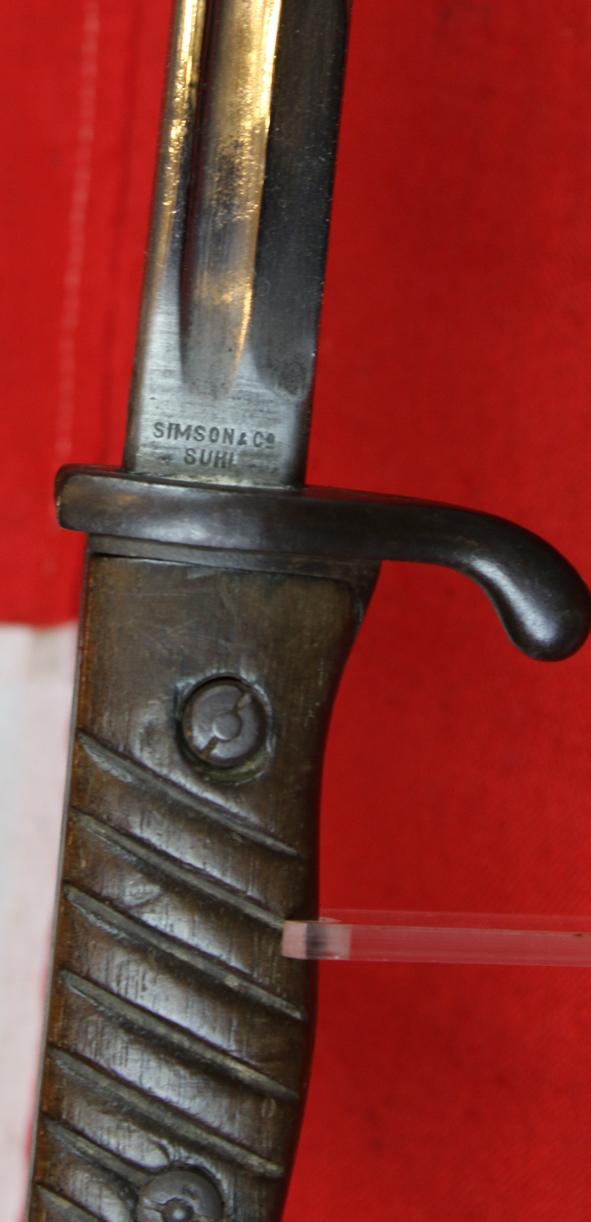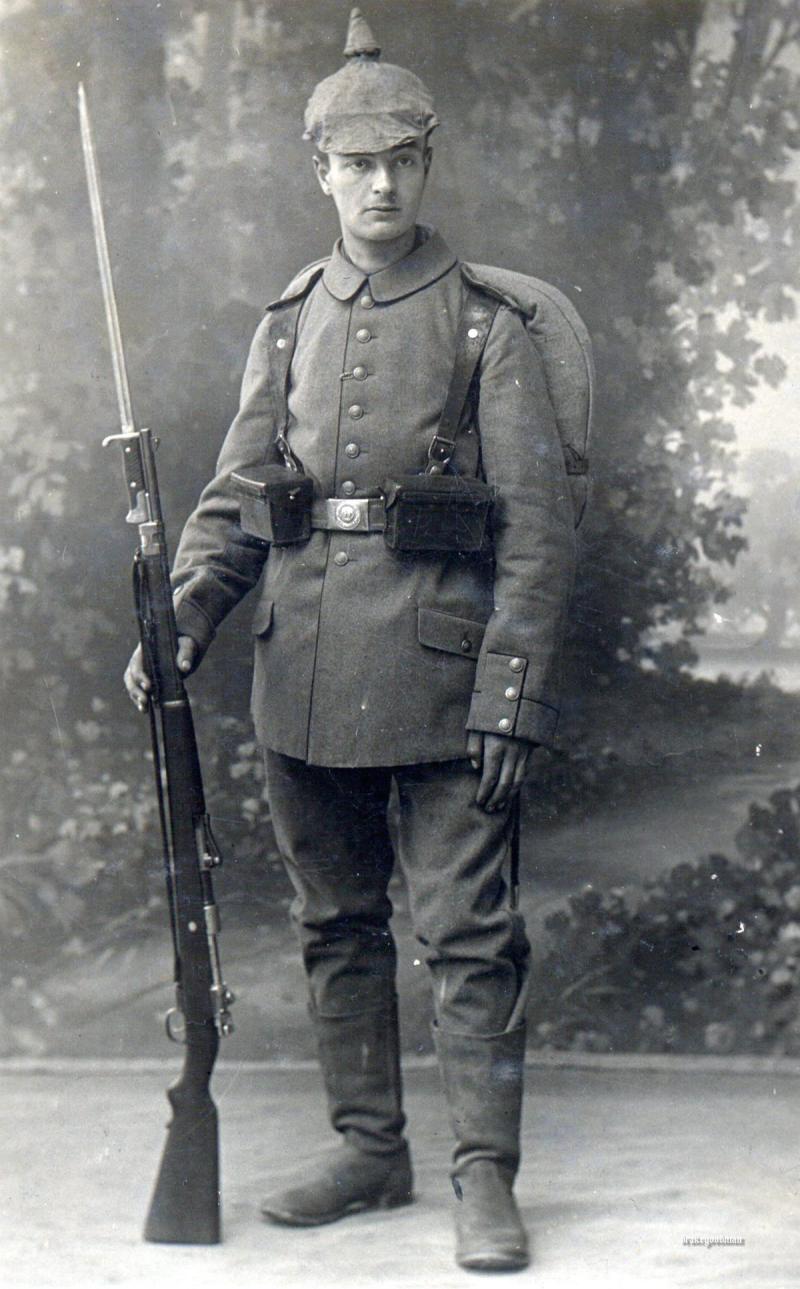A Most Scarce German, 'Extra Long' Mauser WW1 Regimental Issue Pattern 1898, "Neuer Art" Sword Bayonet used From the Invasion of Belgium & France in August 1914 181st Royal Saxon Infantry. By Simson & Co. Suhl.
The term "181st Royal Saxon Infantry" Infanterie-Regiment Nr. 181, an Imperial German Army regiment that existed from 1900 to 1919 and fought in World War I, particularly on the Western Front. Its battles are a part of the larger conflict, rather than being associated with a distinct historical regiment of that number in earlier Saxon armies. The regiment was part of the XIX (2nd Royal Saxon) Army Corps, which saw action in the Battle of the Frontiers.
World War I (1914–1918)
Battle of the Frontiers: The XIX (2nd Royal Saxon) Army Corps, which included Infanterie-Regiment Nr. 181, was involved in the early stages of the war, fighting in the Battles of the Frontiers.
Western Front: The regiment's service was primarily on the Western Front, operating as part of the 88th Infantry Brigade within the XIX Corps.
Battle of the Frontiers, collective name for the first great clashes on the Western Front of World War I, which occurred from August 4 to September 6, 1914. The term Battle of the Frontiers encompasses the initial battles fought along the eastern frontier of France and in southern Belgium shortly after the beginning of the war that resulted in a series of stunning German victories and Allied retreats. The advance continued until the First Battle of the Marne (September 6–12), when a successful French and British counteroffensive along the Marne River near Paris, aided by 600 Parisian taxis that carried additional French troops to the front, finally halted the massive German advance, thwarting German plans for a quick and total victory on the Western Front and setting the stage for the years of trench warfare to come. These collective clashes can been seen as the largest battle in human history up to that time, with a total of more than two million troops involved in the fighting.
Losses: Allied, more than 200,000 casualties of 1,500,000; German, unknown of 1,450,000.
The Western Front became so fixed primarily because of a lopsided revolution in military tactics and technology. Simply put, advances in offensive warfare had not developed at the same rate as those in defensive warfare. In the early years of World War I, a force could protect itself with barbed wire, stationary machine guns, and rapid-fire artillery, but it could attack only with infantry armed with bolt-action rifles. This lack of parity between an attacker and a defender meant that new offensives rarely succeeded and almost always resulted in enormous casualties. The war in the west therefore settled into a prolonged stretch of trench warfare in which neither side could gain a clear advantage.
Code: 25991
300.00 GBP





